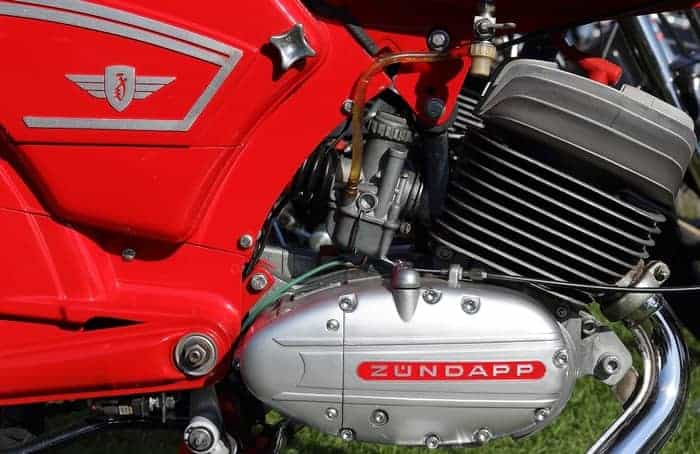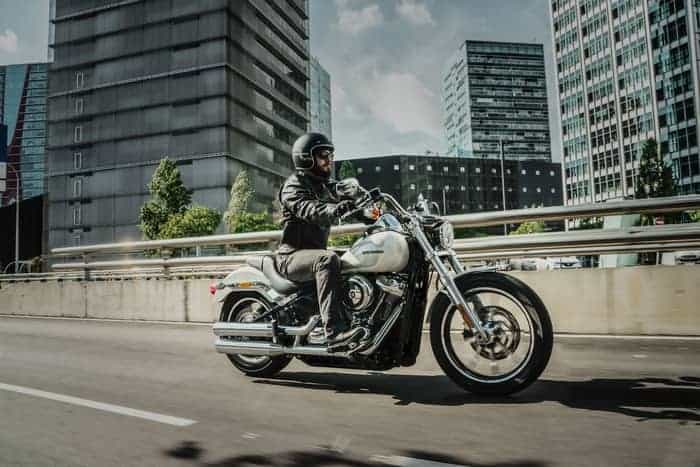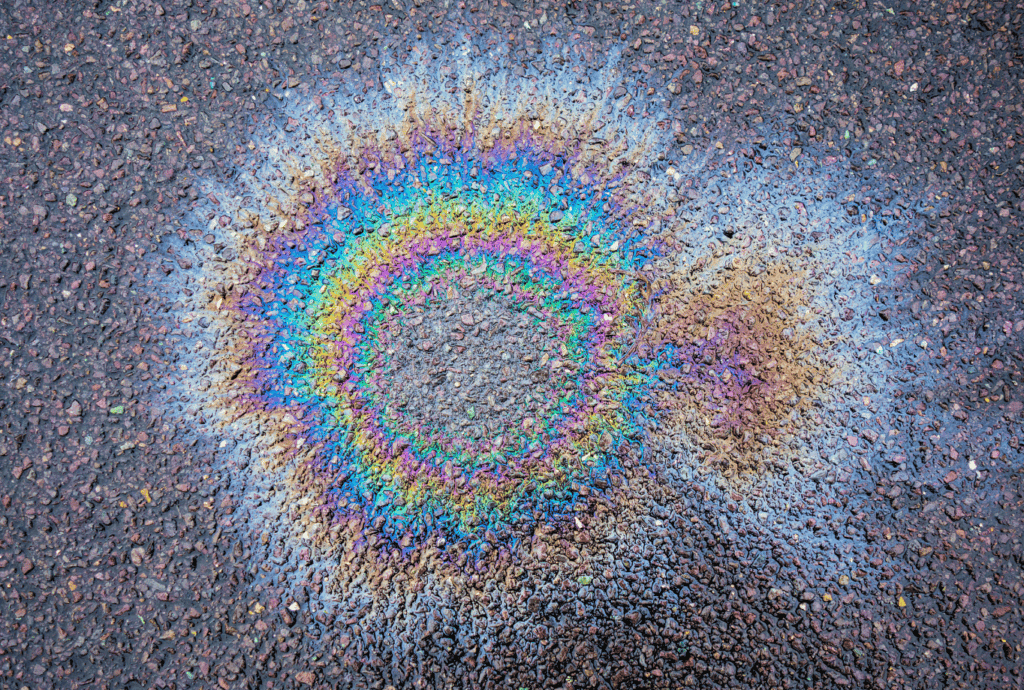
Carburetor malfunctions can be pretty frustrating. In my experience, when a motorcycle starts acting up I check the carburetor first because that’s usually the culprit.
Sometimes it can be difficult to know whether or not it’s the carburetor causing the problem. I’ve listed 11 common symptoms of a bad motorcycle carburetor that you can check to see if it really is the reason your motorcycle is running poorly.
Running Lean
The main function of a carburetor on a motorcycle is mixing the appropriate amount of air and fuel the engine needs to run properly. When a motorcycle is running lean, that means there’s too much air and not enough fuel in the air/fuel mixture during the combustion process. This process takes place in the carburetor if your motorcycle has one.
A lean running motorcycle will be made known by a sluggish performance, the exhaust pipes running hotter than normal that may turn blue, and if the spark plugs wear out faster than normal. This is because the excessive air is making the mixture burn much hotter than it should.
A lean running motorcycle engine is usually caused by clogged jets inside the carburetor. When the jets are clogged, that means not enough fuel is being delivered hence the reason there’s too much air in the mixture. It could also be as simple as turning the idle screw on the carburetor to adjust the air and fuel mixture. To learn more about your motorcycle running lean, see my other article here.
Running Rich
A motorcycle running rich is viewed as the opposite as a motorcycle running lean. Running rich means that there is too much fuel in the air/fuel ratio inside the carburetor and will, in turn, make the motorcycle run poorly.
When there’s too much fuel added and not enough air, you’ll likely notice your motorcycle smelling strongly of fuel, notice a fuel leak (most likely from the carburetor), and an overall poor performance on the motorcycle. Some motorcycles will naturally have a smell of fuel about them, but if you notice an excessive amount of this smell, you’re likely running rich.
Luckily there are several ways to fix a motorcycle running rich. Such ways may include adjusting the air/fuel screw, fixing a sticking needle, fixing stuck open floats, and fixing sticking butterfly valves (all of which are a part of the carburetor). Click here to see my other article for more details about how to fix a motorcycle running rich.
Backfiring
While some motorcycle owners purposely make their motorcycles backfire, it isn’t something that should be happening normally.
There are several reasons why a motorcycle can backfire unintentionally, but two of the biggest reasons will include too much fuel or too little fuel getting delivered (lean or rich) from the carburetor. If there’s too much fuel present, the combustion process may not be able to burn off all the fuel which will push some of it into the exhaust pipes. The fuel will then combust because of the extreme temperatures in the pipes which gives it the loud pop sound.
With too little fuel, there’s way too much air and the fuel has difficulty combusting. As soon as the exhaust valve opens and the air/fuel mixture hits the hot exhaust header, the fuel ignites and makes the loud bang sound. To learn more about reasons why your motorcycle is backfiring, see my other article here.
Sputtering

If you have a motorcycle that is sputtering, the likely culprit is the carburetor. There are three main reasons why including a vacuum leak, fuel leak, and being out of tune.
A vacuum leak from the carburetor can cause the motorcycle to sputter because it causes an interruption in the proper air to fuel ratio mixture which causes poor performance on the motorcycle. Vacuum leaks are usually caused by intake boots that are cracked or brittle. A fuel leak from the carburetor will also disturb the air to fuel ratio because it’s going elsewhere.
Sputtering could also be caused by the carburetor being out of tune which means you’ll need to adjust the air/fuel screw to ensure the right mixture. To learn more about why your motorcycle is sputtering, see my other article by clicking here.
I have created a video series about restoring motorcycles from start to finish and within this series includes a detailed 25 minute video on how to clean and rebuild carburetors. This series also includes other hard-to-tackle components such as body work and electrical. I give dozens of tips and tricks that you won’t find anywhere else online. Click here for more information if you’re interested in viewing multiple videos that will help fix up your bike or if you’re interested in completely building your dream motorcycle!
Motorcycle Won’t Start
There are several reasons why a motorcycle won’t start. When I find myself in this situation, I always resort to looking at the carburetor because it’s usually the problem. I have bought dozens of motorcycles in the last few years from sellers who claimed the bike “didn’t run.” 99% of the time I got them to run just like new by simply cleaning out the carbs.
If you have a motorcycle that won’t start, the carburetor may be dirty and will need a good cleaning. This means that the jets inside are probably clogged with deposits which means no fuel can pass through at all. Using the wrong type of fuel, not having a fuel filter, and letting your motorcycle sit for long periods of time without proper preparation is the perfect combo for clogged jets.
I suggest doing a thorough cleaning by taking the carburetor off to clean it, but it’s also possible to clean it without removing it (see my article here to learn how to do that). To learn more about other reasons why your motorcycle may not be starting, see my other article by clicking here.
Lost Power During Acceleration
Acceleration on a motorcycle relies heavily on the carburetor. During acceleration, the rider twists the throttle which is connected to a throttle cable which is connected to the carburetor. This mechanism opens and closes the butterfly valves that feeds air into the air/fuel mixture inside the carburetor.
When power is lost during acceleration, it’s likely there is some issue within the carburetor. Such reasons may include clogged jets, a broken carburetor spring, a vacuum leak from the carburetor or intake boot, or a spring placed backwards. The usual good carb cleaning should do the trick, however if that doesn’t fix the issue take a look at the springs and play around with the throttle to make sure it’s properly opening those valves.
For more information about why your motorcycle may be losing power while accelerating, see my other article by clicking here.
Idling High
A high idle on a motorcycle is an issue that can cause a slew of other problems if it isn’t taken care of promptly. High idling can wear out the engine faster and burn off more fuel than you’re willing to pay for. And, again, the usual culprit is likely an issue within the carburetor.
When a motorcycle is idling high, that means there is too much of an air/fuel mixture at a low speed or in neutral position. Essentially the combustion reaction continues to occur more frequently when the motorcycle isn’t going fast, or really going at all. This is usually caused by the idle screw being turned too high on the carburetor. Luckily a simple few turns should fix the problem.
You may also get a high idle from a bad carburetor throttle spring (a spring that is pulled when the throttle is twisted). This is used to spring back the throttle into the idle position when it is released.
When this spring malfunctions, the butterfly valves don’t close all the way which lets excessive amounts of air into the carburetor causing the combustion process to occur more than needed. You can identify if this is your problem by simply visually assessing the spring itself. A bad spring will look stretched out. Click here to learn more about why a motorcycle idles high.
Gas Leaking

Gas leaks are luckily a pretty easy problem to detect. You can know this is happening by actually seeing a leak or noticing your motorcycle emitting a stronger smell of gas. Gas leaks can happen anywhere in the fuel system.
If you notice your gas is leaking, take a good look at the fuel system, especially the carburetor. If your carburetor is leaking, that likely means the gasket that sits on top of the carburetor bowl is brittle or worn. That carburetor bowl is what holds the prepared gas for combustion and with it sitting there next to a faulty gasket, it’ll easily leak out.
The fix for this is inexpensive but will take a little time. You’ll need to order a new gasket for your carburetor and take it apart to replace the faulty one. Carburetors are motorcycle specific, but you can easily look online for instructions on how to take apart your carburetor. See my other article here to learn more about why your motorcycle may be leaking gas.
Hissing Sound
Hissing is always an unpleasant sound no matter where it’s coming from. It’s not only annoying if you notice a hissing sound from your bike, but it could be an underlying problem with your carburetor. A hissing sound is usually from the carburetor and it almost always means there is a vacuum leak somewhere.
Carburetors work by using a certain amount of pressure that creates the appropriate mix of fuel and air the engine needs for combustion. When there’s a vacuum leak (meaning if there’s a hole in the fuel system somewhere), the carburetor can’t do it’s job right. Think of it like trying to suck water from a straw. If there’s a hole in it somewhere above the water, you can’t really suck it up effectively.
Vacuum leaks can be found in various places and can be caused by various reasons. Brittle gaskets, worn intake boots, loose screws, etc. Because of this, it can be a little overwhelming to find the exact location of the vacuum leak if the hissing isn’t obvious to find.
To find the location of the air leak, get a can of WD-40 or carb cleaner that has an extension nozzle on it and briefly spray on small sections of the carburetor while the motorcycle is on. If you notice the motorcycle idle improving after a certain spray on the carburetor, you’ve found the location of the leak. This is because the leak will suck in the cleaner or WD-40 and combust it, improving the air/fuel ratio.
Poor Fuel Economy
Poor fuel economy is an indication that your motorcycle’s carburetor isn’t running right. When the carburetor malfunctions, it can feed too much fuel into the combustion chamber (aka when it runs rich). Because of the excessive use of fuel, you’ll notice you aren’t getting as good of gas mileage and have to fill up more often than you normally do. This is indicative of a poorly tuned carb.
Unusual Wear On The Spark Plugs
If you suspect your motorcycle carburetor is faulty, pull out a spark plug or two and inspect the head. An optimal running carburetor will leave a spark plug with a thin layer of carbon buildup with a coffee color. A carburetor running lean will leave it will little to no carbon build up with possible black spot deposits while a carburetor running rich will leave a thick, glossy layer of carbon deposits.

